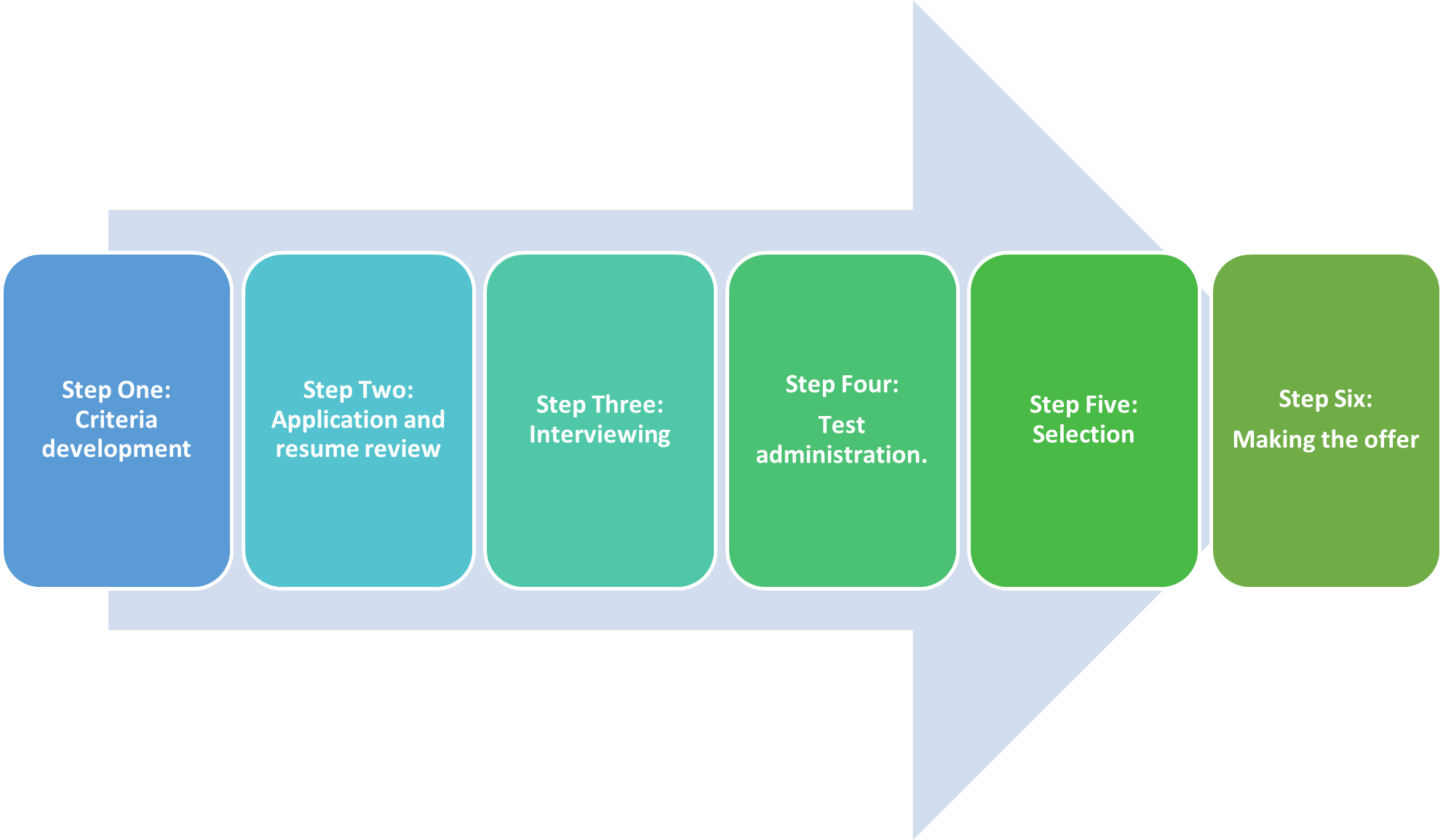The Selection Process
Learning Objective
- Be able to name and discuss the steps in the selection process.
- Be able to explain why criteria development is an important part of the selection process.
- Give examples of the types of criteria that can be developed.
- Describe the advantages and disadvantages of internal and external candidates.
- Explain the various types of interviews and interview questions.
- Explain the types of tests that can be administered as part of the selection process.
- Be able to discuss the types of selection models and errors in selection.
After recruitment has yielded a sufficient number of quality applications, the selection of candidates can begin. The selection process refers to the multiple steps involved in choosing people who have the right qualifications to fill a current or future job opening. Usually, managers and supervisors will have the ultimate decision as to who gets hired, but the role of HRM is to create a funnel, narrowing down the list of candidates and guiding managers in this process. Similar to the recruitment process, the selection process can be expensive. The time involved in the hiring process to review resumes, weigh the applications, and conduct interviews can be extensive and takes time (and money) away from other priority activities within the organization. In addition, there are financial implications of conducting testing of candidates and potential travel for in-person interviews. In fact, the US Department of Labor and Statistics estimates the combined direct and indirect cost of hiring a new employee can reach upwards of $40,000 (Hamm, 2011). Due to the high costs, it is important to hire the right person from the beginning and ensure a fair selection process.
How to Select Employees
The selection process consists of six distinct aspects:

- Step One: Criteria development. The first aspect of selection is planning the interview process, which includes criteria development. Criteria development means determining which characteristics are sought for the position and how those characteristics will be assessed during the selection process. As previously mentioned, the criteria should be related directly to the job analysis and the job specifications. By developing the criteria before reviewing resumes, the HR manager can be sure they are being fair in the selection of candidates to interview as they have not been influenced by information in the candidate’s application or resume. Some organizations may need to develop an application or a biographical information sheet. Most of these are completed online and should include information about the candidate, education, and previous job experience. Finally, identification of the selection criteria and weighting of the criteria should be determined at this stage, again to prevent influence from the information contained in the candidates’ resumes.
- Step Two: Application and resume review. Once the criteria have been developed, applications can be reviewed. Increasingly, HR managers use automated software to screen applications and resumes. These are based on keywords searches that narrow down the number of candidates’ resumes for review.
- Step Three: Interviewing. After the HR manager and hiring manager have determined which applications meet the minimum criteria, they must select those people to be interviewed. Most people do not have time to interview twenty or thirty candidates, so the list of candidates is reduced to a ‘short-list’ – typically to 3 to 5 candidates for a final round of screening.
- Step Four: Test administration. After the interview stage, a company may administer a test or series of tests before a hiring decision is made. These could include drug tests, physical fitness tests, personality tests, and/or cognitive tests. Increasingly, at this stage, companies also perform social media checks to confirm that the information in their resume is the same as posted online, or to see how applicants present themselves to the public.
- Step Five: Selection. At this point in the process, hiring manager(s) should have the information they need to select the best suitable candidate for the position. All of the information gathered throughout the process is reviewed and a decision is made. Once the ideal candidate is selected, some organizations also perform reference checks and credit report checks to confirm final suitability.
- Step Six: Making the offer. The last step in the selection process is to offer a position to the chosen candidate. The development of an offer via e-mail or letter is a formal part of the process and requires careful articulation of all elements and conditions of the offer. Compensation and benefits will be defined in an offer, as will any unique legal considerations.
Figure 5.1. The Selection Process at a Glance
| Step | Objectives |
|---|---|
| Criteria Development |
|
| Application and Resume Review |
|
| Interview |
|
| Test Administration |
|
| Selection |
|
| Making the Offer |
|
We will discuss each of these aspects in detail in the following section.
References
Bryant, A., “The X Factor When Hiring? Call It Presence,” June 26, 2010, New York Times, accessed July 12, 2011, http://www.nytimes.com/2010/06/27/business/27corner.html?scp=1&sq=Selander&st=cse&pagewanted=1.
Hamm, L., “Pre-Employment Testing,” IHD Corporation, n.d., accessed August 2, 2011, http://www.ihdcorp.com/articles-hr/pre-employment-testing.htm.

